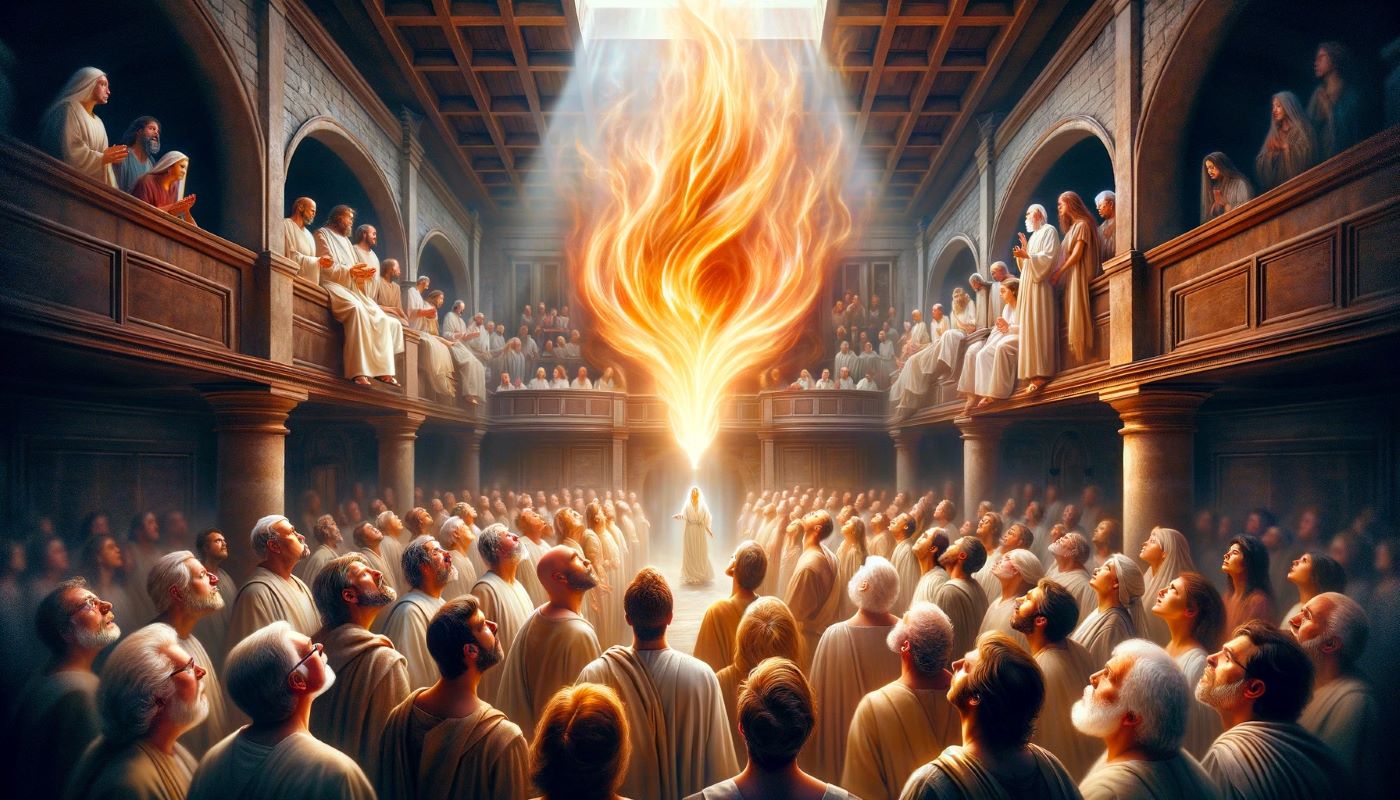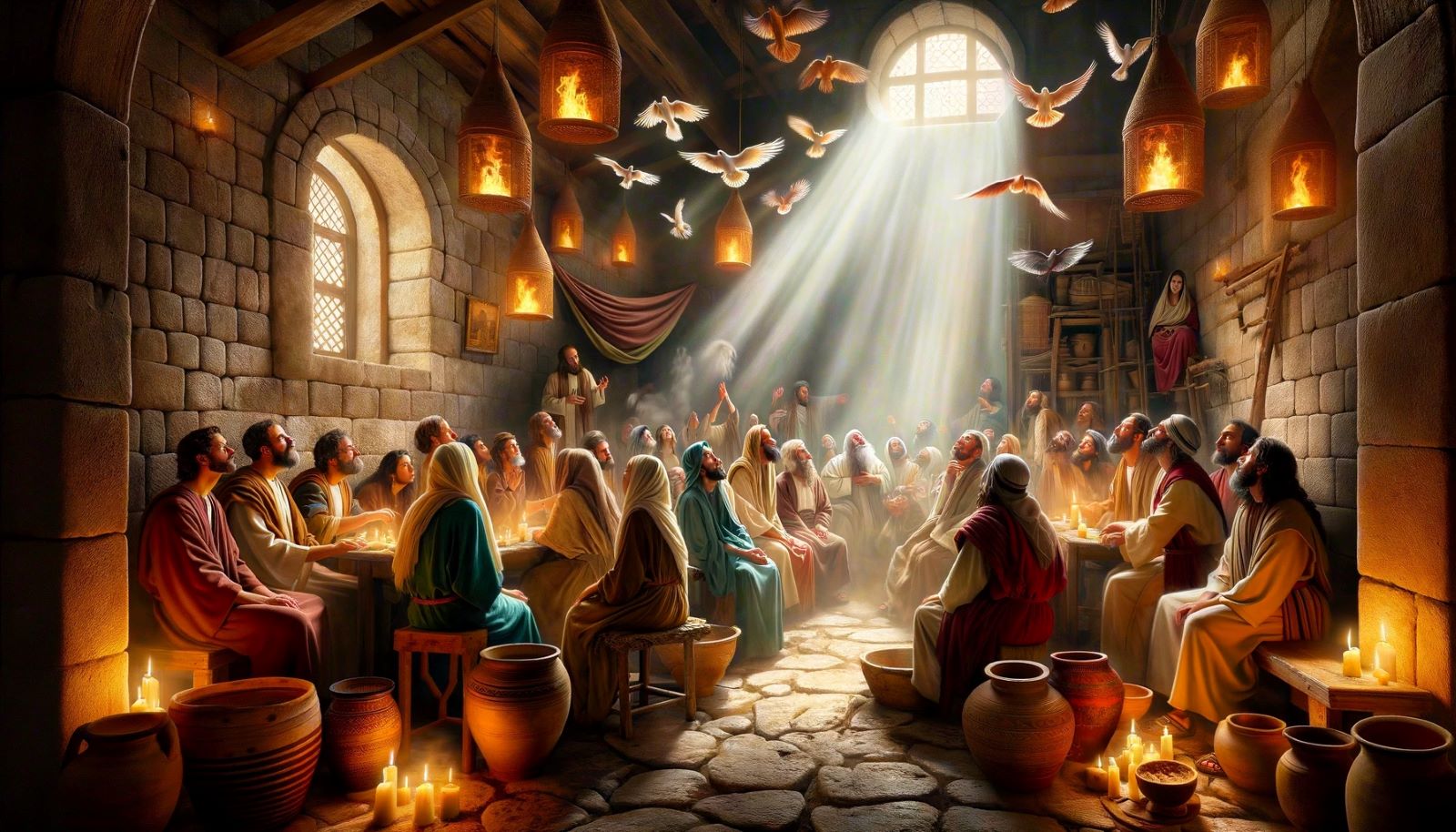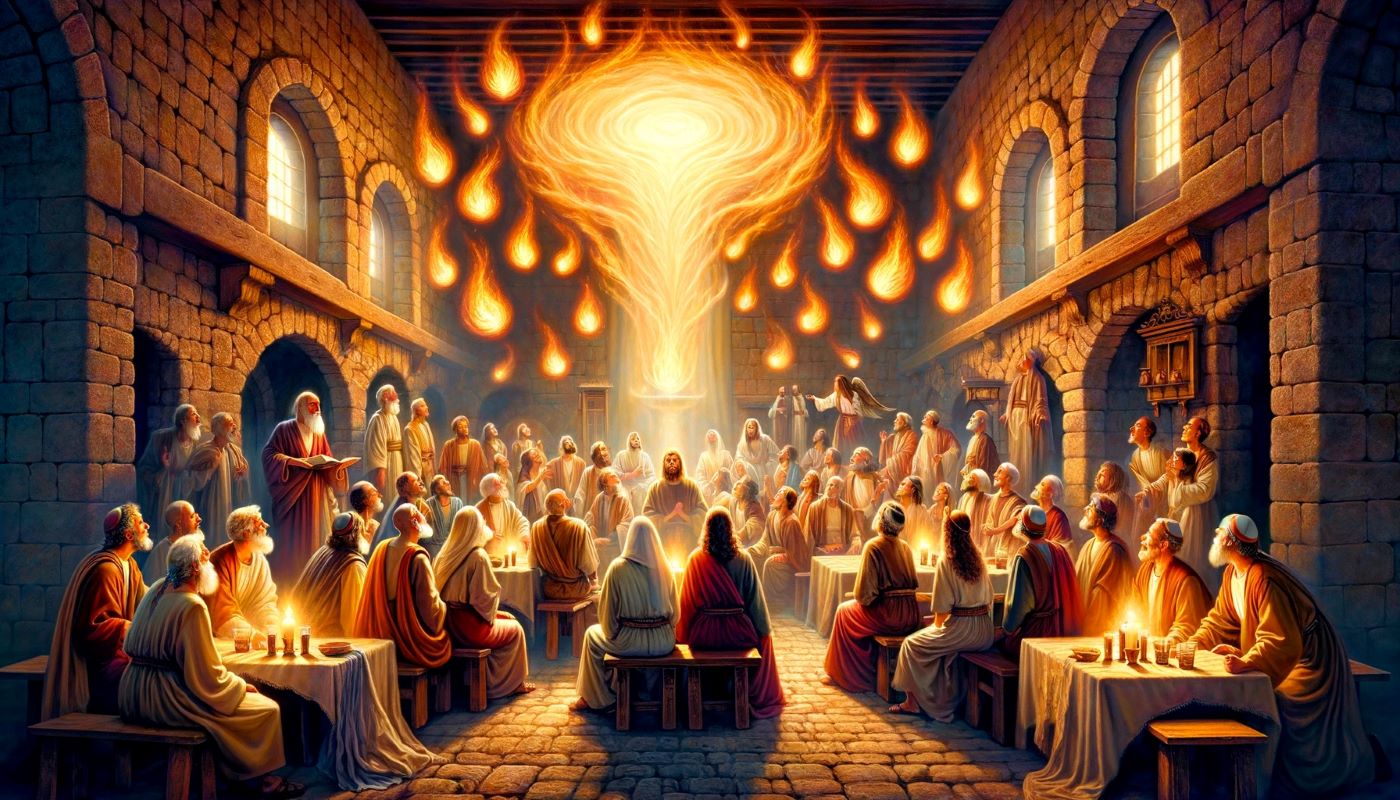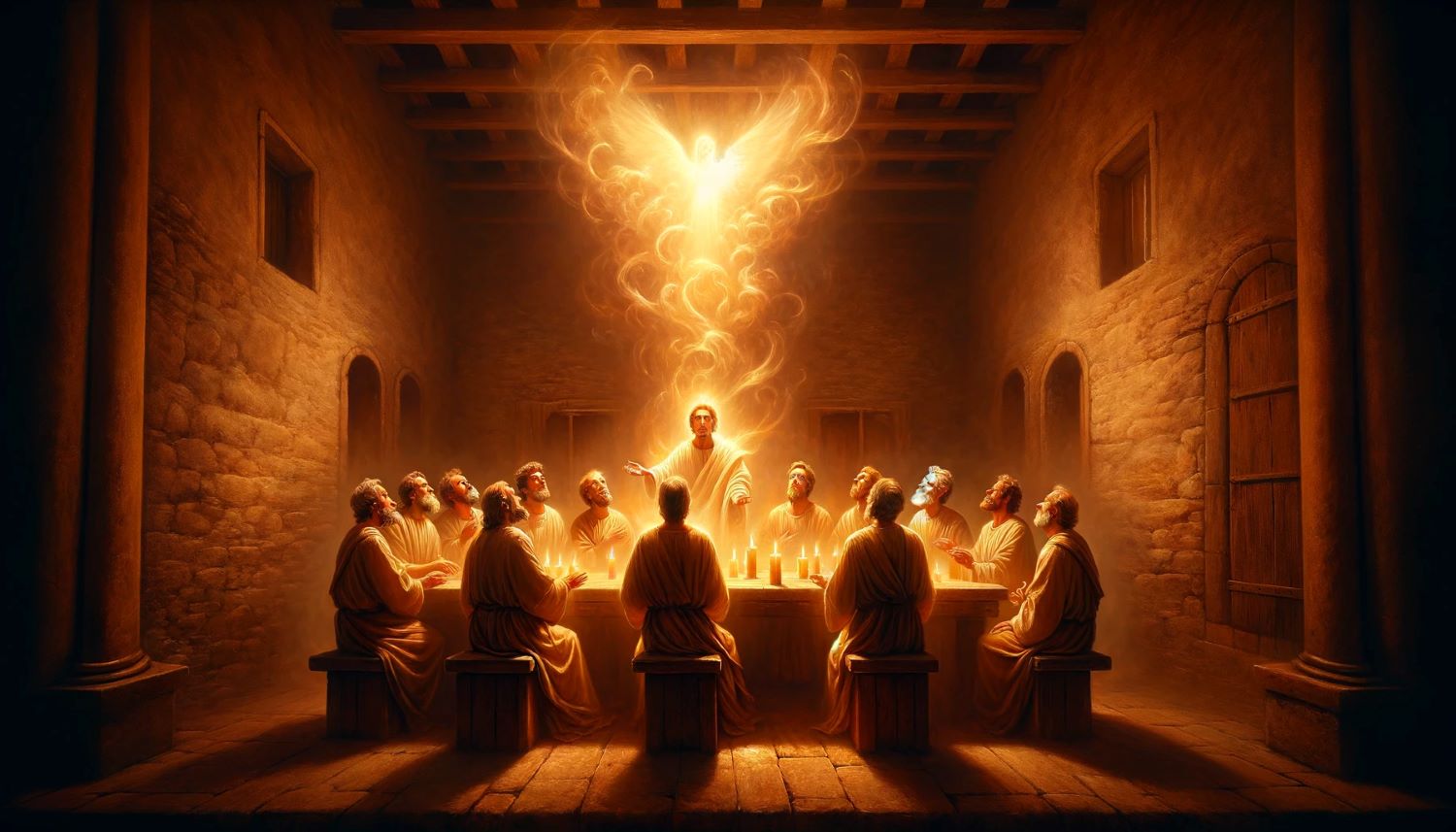Home>Bible Facts>What Two Symbols Does The Acts Of The Apostles Use To Describe The Descent Of The Holy Spirit?


Bible Facts
What Two Symbols Does The Acts Of The Apostles Use To Describe The Descent Of The Holy Spirit?
Published: February 22, 2024
Jason DeRose, Managing Editor at Christian.net, uses his expertise in religion and journalism to deepen understanding of faith's societal impacts. His editorial leadership, coupled with a strong academic background, enriches the platform’s diverse content, earning him recognition in both journalism and religious circles.
Discover the symbols used in the Acts of the Apostles to depict the descent of the Holy Spirit. Uncover fascinating Bible facts and insights.
(Many of the links in this article redirect to a specific reviewed product. Your purchase of these products through affiliate links helps to generate commission for Christian.net, at no extra cost. Learn more)
Table of Contents
Introduction
The Acts of the Apostles, a pivotal book in the New Testament, vividly portrays the events following the ascension of Jesus Christ and the remarkable outpouring of the Holy Spirit upon the apostles. This momentous occasion is symbolically represented by two powerful and evocative images: wind and fire. These symbols serve as profound metaphors for the divine presence and transformative power of the Holy Spirit, capturing the attention and imagination of readers across generations.
The utilization of these symbols in describing the descent of the Holy Spirit in the Acts of the Apostles is not merely coincidental; rather, it is a deliberate choice that conveys profound spiritual truths. By delving into the significance of these symbols, we gain a deeper understanding of the extraordinary nature of the Holy Spirit's arrival and its enduring impact on the early Christian community. Let us embark on a journey to explore the symbolism of wind and fire in this pivotal biblical account, unraveling the layers of meaning and spiritual significance they hold.
Read more: What Does Holy Communion Symbolize
The Symbol of Wind
The depiction of wind as a symbol in the Acts of the Apostles serves as a profound representation of the Holy Spirit's arrival and its transformative influence. When the day of Pentecost arrived, the apostles were gathered together, and suddenly, a sound like a mighty rushing wind filled the entire house where they were sitting. This powerful imagery of wind conveys the dynamic and awe-inspiring nature of the Holy Spirit's manifestation.
The symbolism of wind holds significant spiritual connotations. In biblical and cultural contexts, wind often symbolizes power, movement, and the breath of life. Just as the wind is unseen yet its effects are felt, the Holy Spirit operates in ways that transcend human comprehension, permeating hearts and minds with divine influence. The metaphor of wind underscores the omnipresence and omnipotence of the Holy Spirit, signifying its ability to bring about profound spiritual renewal and empowerment.
Moreover, the wind symbolizes the divine guidance and direction provided by the Holy Spirit. In the same way that the wind can change the course of a sailboat, the Holy Spirit has the capacity to guide and steer believers along the path of righteousness and purpose. This symbolism resonates deeply with the early Christians and continues to resonate with believers today, reminding them of the Spirit's role in leading and guiding them through life's journey.
The symbolism of wind in the Acts of the Apostles conveys the universal and timeless nature of the Holy Spirit's influence. It transcends cultural and linguistic barriers, resonating with people from diverse backgrounds and generations. The imagery of wind serves as a powerful reminder of the enduring impact of the Holy Spirit, inspiring and empowering believers to embrace the transformative work of the Spirit in their lives.
In summary, the symbol of wind in the Acts of the Apostles encapsulates the dynamic, guiding, and transformative nature of the Holy Spirit. It serves as a poignant reminder of the Spirit's omnipresence, power, and ability to bring about spiritual renewal and empowerment. This symbol continues to captivate and inspire believers, inviting them to embrace the profound influence of the Holy Spirit in their lives.
The Symbol of Fire
The symbol of fire in the Acts of the Apostles is a striking and evocative representation of the descent of the Holy Spirit and its profound impact on the early Christian community. On the day of Pentecost, as the apostles were gathered together, they were suddenly engulfed by tongues of fire that rested upon each of them. This awe-inspiring imagery of fire conveys the intense and transformative nature of the Holy Spirit's manifestation.
The symbolism of fire holds deep spiritual significance and resonates across various cultural and religious contexts. Fire is often associated with purification, illumination, and divine presence. In the biblical narrative, fire symbolizes the purifying and refining work of the Holy Spirit, burning away impurities and illuminating the hearts and minds of believers with divine truth and understanding. The imagery of fire underscores the transformative power of the Holy Spirit, signifying its ability to purify and sanctify individuals, preparing them for a life of spiritual devotion and service.
Furthermore, fire symbolizes the fervent passion and zeal ignited by the Holy Spirit within the hearts of believers. Just as fire spreads rapidly and consumes everything in its path, the Holy Spirit ignites a fervent passion for God and His kingdom, compelling believers to spread the message of hope and salvation with unwavering zeal. The symbol of fire serves as a reminder of the fervor and enthusiasm that accompany the indwelling of the Holy Spirit, empowering believers to boldly proclaim the gospel and live out their faith with courage and conviction.
The symbolism of fire in the Acts of the Apostles resonates deeply with the early Christian community and continues to inspire believers today. It serves as a poignant reminder of the transformative and illuminating work of the Holy Spirit, inviting individuals to embrace the refining fire of God's presence and the fervent passion it ignites within their hearts. The imagery of fire symbolizes the enduring impact of the Holy Spirit, empowering believers to live lives marked by spiritual purity, fervent zeal, and unwavering commitment to the gospel message.
In summary, the symbol of fire in the Acts of the Apostles encapsulates the transformative, illuminating, and impassioned nature of the Holy Spirit's descent. It serves as a powerful reminder of the Spirit's purifying work, fervent zeal, and enduring impact on the lives of believers, compelling them to embrace the transformative power of the Holy Spirit in their spiritual journey.
Conclusion
In conclusion, the Acts of the Apostles masterfully employs the symbols of wind and fire to depict the descent of the Holy Spirit with profound depth and spiritual significance. The imagery of wind conveys the dynamic, guiding, and transformative nature of the Holy Spirit, symbolizing its omnipresence, power, and ability to bring about spiritual renewal and empowerment. This symbol serves as a poignant reminder of the enduring impact of the Holy Spirit, inspiring and empowering believers to embrace the transformative work of the Spirit in their lives.
Similarly, the symbol of fire in the Acts of the Apostles represents the intense and transformative nature of the Holy Spirit's manifestation. It symbolizes purification, illumination, and fervent passion, signifying the Spirit's ability to purify, illuminate, and ignite a fervent zeal within the hearts of believers. The imagery of fire serves as a powerful reminder of the transformative and illuminating work of the Holy Spirit, inviting individuals to embrace the refining fire of God's presence and the fervent passion it ignites within their hearts.
The utilization of these symbols in the Acts of the Apostles goes beyond mere literary devices; it encapsulates profound spiritual truths and timeless principles that continue to resonate with believers across cultures and generations. The symbolism of wind and fire serves as a compelling invitation for believers to embrace the transformative power of the Holy Spirit, allowing it to guide, purify, and ignite their hearts with fervent passion for God and His kingdom.
As we reflect on the symbolism of wind and fire in the Acts of the Apostles, we are reminded of the universal and enduring nature of the Holy Spirit's influence. It transcends cultural and linguistic barriers, resonating with people from diverse backgrounds and generations. The imagery of wind and fire stands as a testament to the transformative and empowering work of the Holy Spirit, inspiring believers to live lives marked by spiritual renewal, fervent zeal, and unwavering commitment to the gospel message.
In essence, the symbols of wind and fire in the Acts of the Apostles serve as timeless reminders of the profound impact of the Holy Spirit on the lives of believers, inviting them to embrace the transformative power and guiding presence of the Spirit in their spiritual journey. As we continue to explore the depths of these symbols, may we be inspired to cultivate a deeper awareness of the Holy Spirit's work in our lives and to walk in step with the transformative and empowering presence of the Spirit each day.















